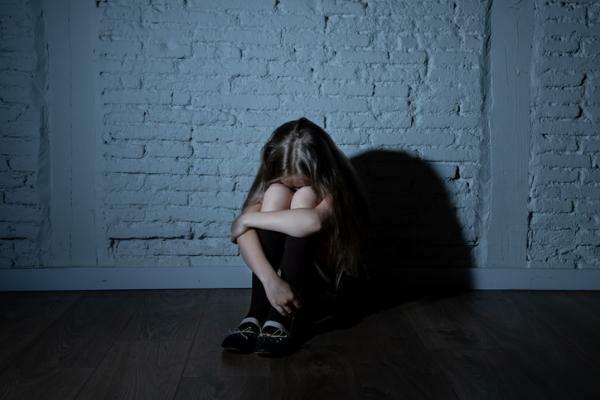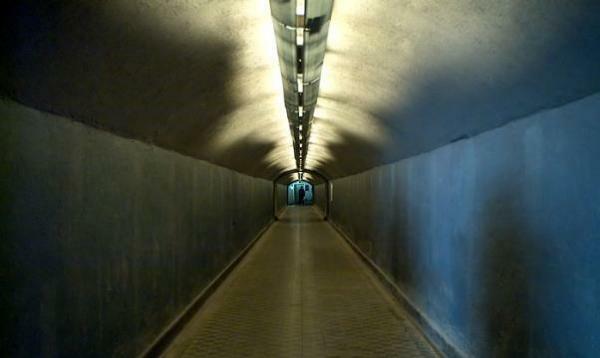
When we speak of child abuse we refer to any negligent action, omission or treatment, not accidental, that deprives the infant of his rights and well-being, which threatens or interferes with his physical, mental or Social. It is a very serious problem worldwide that must be worked on together.
Physical abuse, emotional abuse, neglect and sexual abuse are the main types of child abuse In addition to prenatal abuse that can influence the fetus, in this Online Psychology article we will address the different ways of prevention as well as the characteristics of an abused child that can make us wake up the alarm and act in their aid. In this article you will find the causes and solutions of child abuse. How to prevent it is everyone's responsibility.
Index
- Characteristics of an abused child
- How to avoid child abuse?
- How to work on child abuse in the classroom?
Characteristics of an abused child.
The characteristics or clinical expressions of an abused child are classified into two large blocks:
Visible signs of child abuse
Visible expressions can be found in any type of child abuse, they usually correspond to injuries that affect the skin or mucous membranes, such as: ecchymosis, scratches, burns, signs of aggression on the skin with a blunt object such as wire, cord, belt or a sharp object and human bites... They are usually located mainly on the skull, on the face, extremities and / or genitoanal mucosa. They are usually trauma and in most cases, in addition to skin involvement, we can find injuries to the bones in the area and / or organs.
An added characteristic in these patients is that the fracture line is usually not explained by the mechanism posed by the family member or the person in charge of the minor. Thus, the doctor not only locates the injury, he must also understand and explain the probable mechanism of this.
The nervous system of children also suffers, especially in those under 2 years of age a consequence of severe shaking of the skull or spanking of the body is observed. This circumstance is called the "Shaken Child Syndrome" of which there are two modalities: the first is the most frequent form, this one does not present visible physical symptoms despite the severity of the syndrome, they present acute distress of the central nervous system expressed by sudden onset seizures or loss of alertness, as well as insufficiency sudden cardio-respiratory. The second modality is the one that presents injuries to the cranial vault or to one or more long bones.
The pregnancies in younger girls of twelve or years or that are around the age, are also one of the visible causes since they respond to sexual abuse, as well as the existence of a sexually transmitted disease.
Invisible Characteristics of a Battered Infant
Four different pathological conditions are contemplated:
- Severe malnutrition. It is important that both the doctor and the social professional work together in this area, since if a minor is in a box serious malnutrition, it would be necessary to investigate the origin, if it is really child abuse or perhaps it responds to a cause of poverty in the family.
- Low size. Any other pathology that could cause the child to be short must be ruled out before being associated with the consequences of psychological child abuse or neglect.
- Overweight or child-adolescent obesity. Often this fact can be explained by an incorrect diet and sedentary habits, but in others Sometimes it can be due to a depression caused by sexual abuse that manifest eating in a way compulsive.
- Emotional disturbances. Sleep, appetite, toilet training and school performance problems, mainly. The appearance of these symptoms is usually sudden and difficult to control and resolve. Again it is necessary to find out if these symptoms are related to child abuse or respond to another origin.
How to avoid child abuse?
The best form of prevention of child abuse is a open communication among children and all members of their families as well as educators, in this way, as soon as they feel bad, they may be aware that something bad has happened and that it should not be so for express it.
Inform and educate for the prevention of child abuse
It is not easy to talk about this with children, but it is necessary to overcome the reluctance that families often expose with these issues and inform them in order to prevent them and that they are able to act with care and paying attention to any stranger.
It's about providing protection tools children so that they themselves can identify misbehaviors and communicate about them. Avoid, as adults, overprotection, uncontrolled reactions and alarmist attitudes as well as denial of the existence of child abuse and sexual abuse of children, we must talk about the issues to prevent them.
Measures against child abuse
It is important for children to be clear about the following issues:
- What they can do to protect themselves. Adults are responsible for protecting them, but without their help and collaboration they will not be able to do it and they themselves can do and learn things to protect themselves.
- The existence of sexual abuse. When a person wants to hurt them, they not only do it by hitting, yelling or insulting, they can sometimes try to do it through caresses when they are not consented.
- Basic security measures. They have to be careful with people they do not know and reject situations in which they try to "like them" to do something, for example, through a gift, inviting them to do some activities that they like, etc.
- Consent in displays of affection. Kisses, caresses, especially intimate ones, and hugs are part of affective relationships, they are given to people they know and love and whenever they want. That is, physical contact should never be forced. Nor should they force someone who does not want to kiss or hug them; nor should they let another person kiss, caress and hug them if they do not want to. Have right to say "no".
How to work on child abuse in the classroom?
School is an important instrument for providing children with adequate information if they are not acquiring it at home, therefore work on child abuse from education it is key to help detect the problem as well as prevent it. Some of the strategies for working on the issue in the classroom are, in general terms:
- Developing the tutorial function so that students know that they can trust the tutor and tell him about their problems.
- Favoring successful experiences to schoolchildren, valuing efforts and achievements, which will encourage children and adolescents more independent, confident and persistent in their efforts.
- Being sensitive to the social environment, flexible in its educational functioning and open to new solutions.
- Educating in values: especially in democratic values and diversity.
In more particular terms, more concrete strategies to prevent child abuse at school are:
- Increase the skills of teachers to deal with conflicts.
- Sensitize the educational community about what child abuse is and what it means.
- Training to have the knowledge and adequate resources to detect risk situations
- Develop dissemination and awareness actions among children, families and the community about the special rights of children.
- Stimulate by all means, the confidence and self-esteem of the children.
- Offer students the space and opportunities to experience non-violent ways of resolving conflict. Assemblies, classroom councils and any means that stimulate democratic participation in school life can be good resources.
- It is also important that the educational center teaches children and adolescents to develop a series of knowledge and skills that allow them distinguish situations of mistreatment and abuse and deal with them.
To successfully develop the preventive function, the educational center as an institution must be able to review its own attitudes towards controlling the behaviors of infants and adolescents and developing lines of teamwork, with students and families
This article is merely informative, in Psychology-Online we do not have the power to make a diagnosis or recommend a treatment. We invite you to go to a psychologist to treat your particular case.
If you want to read more articles similar to How to prevent child abuse?, we recommend that you enter our category of Social psychology.
Bibliography
- CEAPA. Guide for parents: prevention and approach to child maltreatment and sexual abuse from the family and the AMPAS. Recovered from: https://www.observatoriodelainfancia.es/ficherosoia/documentos/4831_d_prevencion_y_abordaje_del_maltrato_infantil_y_abuso_sexual_desde_la_familia_y_las_ampas_0.pdf
- Ombudsman for Children of the Community of Madrid. Detection and prevention of child abuse from the educational center. Guide for teachers. Recovered from: http://www.madrid.org/dat_norte/WEBDATMARCOS/supe/convivencia/materiales/guia_protocolo_maltrato.pdf
- Loredo, A. & Casas, A. & Monroy, D.A. (2014). Child abuse: usual clinical characteristics. Journal of the Faculty of Medicine of the UNAM, 57(1), 1-9.
- Soriano, F.J. (2015). Promotion of good treatment and prevention of abuse in childhood in the field of primary health care. Recovered from: http://previnfad.aepap.org/sites/default/files/2017-04/previnfad_maltrato.pdf


